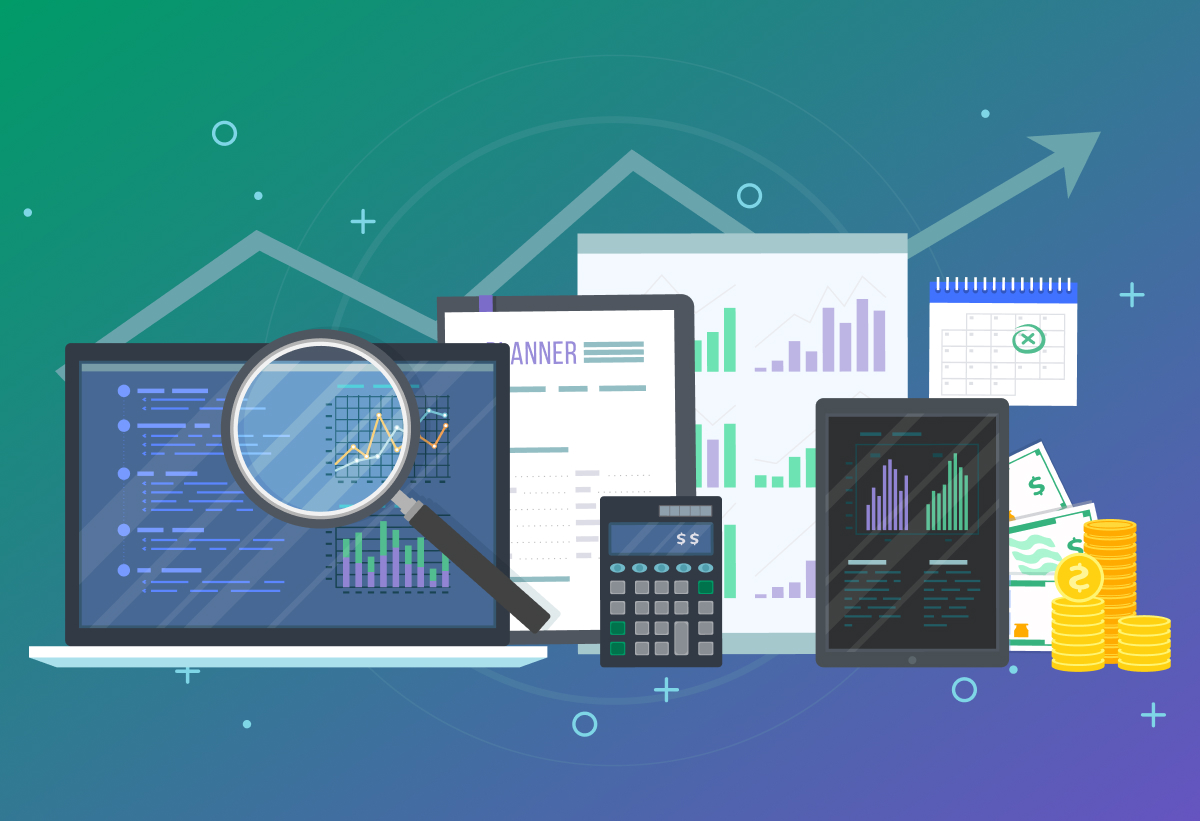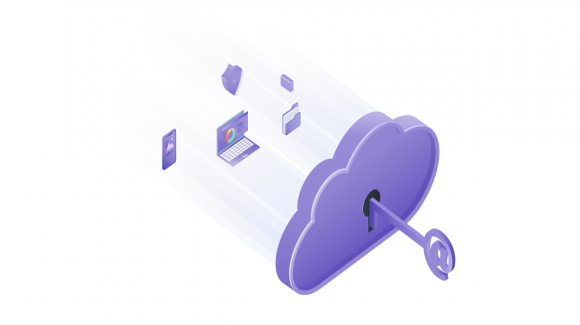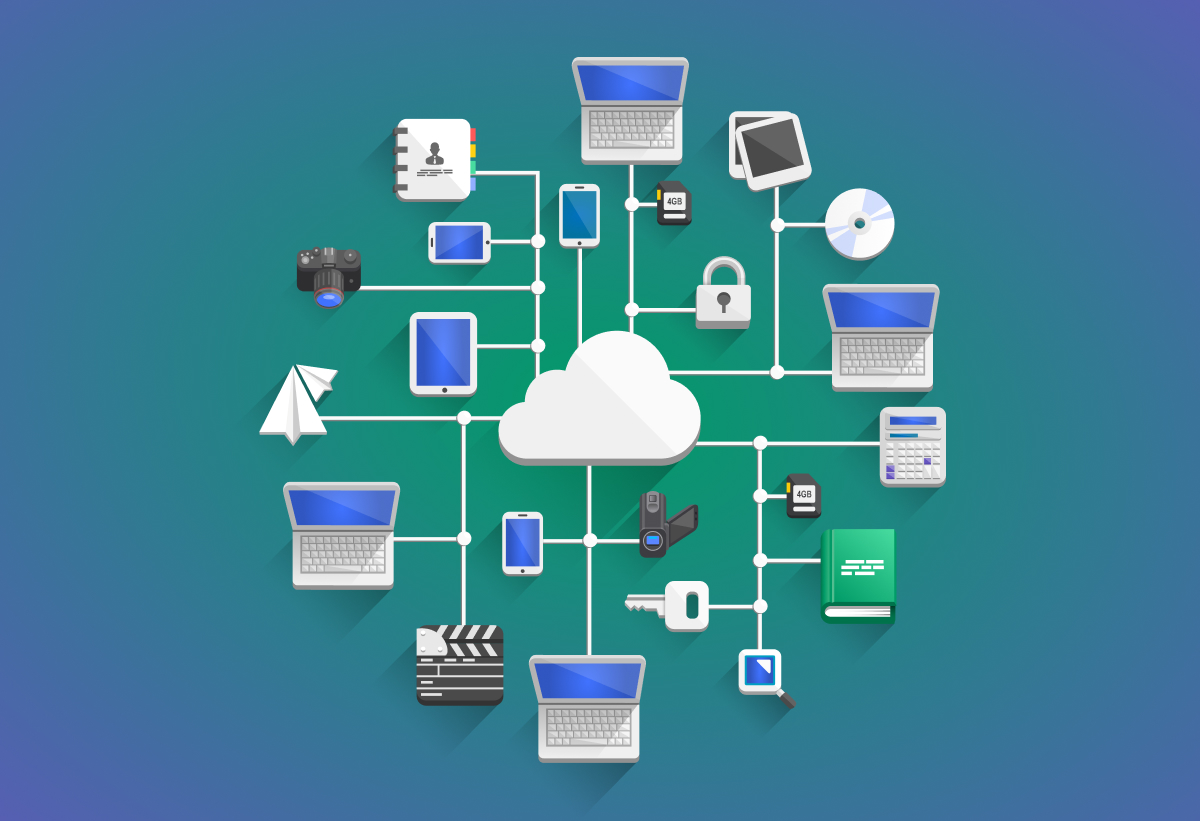The process of cloud migration entails shifting a business's digital assets—ranging from data, and applications, to entire operational processes—from an on-premises infrastructure to a cloud-based environment. This move is primarily motivated by the desire for enhanced scalability, flexibility, and potentially, cost savings.
Cloud migration has become a pivotal part of digital transformation, especially as businesses seek scalability, flexibility, and competitive advantage in the cloud.
With the cloud computing market projected to exceed $1 trillion by 2028, organizations are prioritizing modernization and integration of applications with public cloud services. However, as 90% of organizations now rely on the cloud, the journey is not without challenges.
From hidden migration costs to post-migration management, understanding the full financial impact of cloud migration is essential for a smooth transition.
Understanding the Basics of Cloud Migration Costs
However, the financial outlay for cloud migration is not one-size-fits-all; it significantly depends on factors like the volume and type of data being moved, the scale of the operations, the complexity of the existing systems, and the cloud service provider chosen. Recognizing these determinants is crucial for accurately estimating the cost involved in cloud migration.

What Does Cloud Migration Cost Contain?
When you embark on a cloud migration project, there are many expenses to consider, when creating a comprehensive budget plan:
The Cost of Setting Up Cloud Infrastructure
A major portion of cloud migration expenses is attributed to infrastructure costs, which encompass cloud servers, storage, and networking fees.
However, many businesses underestimate the costs of actually setting up the cloud infrastructure. Setting up the requisite cloud infrastructure entails a variety of tasks, including provisioning for compute and storage capabilities as well as configuring the network.
This process, orchestrated by a DevOps team or an individual, hinges on the complexity and breadth of the application components. Simpler setups might lean towards the lower end of the cost spectrum, whereas more elaborate infrastructures will demand greater resources and financial investment.
The Cost of the Cloud Provider
Choosing a cloud provider involves navigating through a maze of service fees, which are relatively straightforward to calculate. The decision of which provider to choose should take into account several factors such as required services, regional availability, compliance requirements, and preferred technologies. This step is critical in laying down the foundation for the cloud architecture.
With cloud providers offering a variety of pricing models, it's essential to meticulously evaluate the needs of your organization to opt for the most cost-effective strategy, avoiding both over and under-provisioning.
The Cost of Data Transfer
Often underestimated, the expense related to data transfer to and from the cloud can add up, especially for organizations with substantial data volumes. The charges for data upload and download vary across cloud providers and are influenced by the type of storage used. It's imperative to assess this cost carefully, considering both the volume of data and the storage technology (SSD vs. HDD) in use.
Post-Migration Costs
Beyond the initial migration, ongoing costs must be factored into the budget. These include regular service fees for using the cloud infrastructure, personnel expenses for monitoring and maintenance, and any additional costs for tools required for effective management of the cloud environment. We’ll jump into greater detail on this aspect in the next section.

Factors Impacting Cloud Migration Costs
Now that we understand the general costs of cloud migration, let’s take a look at the more specific factors that will affect your cloud migration costs.
- In-house or third-party technical talent: The expertise required for a smooth cloud migration often means engaging with specialized roles such as Cloud Architects and development teams. These professionals are instrumental in designing and implementing the cloud infrastructure, with their compensation reflecting their critical role in the migration process.
- Licensing and software: Migrating to the cloud might require new software licenses or adjustments to existing ones. The costs associated with these licenses, along with compliance with licensing agreements, are crucial considerations in the migration budget.
- Downtime and business disruption: The migration process can lead to operational downtime, translating into direct financial losses. Minimizing downtime through strategic planning is essential for reducing these indirect migration costs.
- Security and compliance: The integrity and compliance of data and applications within the cloud are paramount. This often necessitates investments in additional security measures and compliance or code audits, which can substantially add to the migration costs.
- Data backup and recovery: While cloud providers offer backup and recovery services, these come at a cost. Organizations need to align their backup strategies with their budgetary constraints to ensure data integrity and availability.
- Cloud Consulting: When a business decides to migrate its data and applications to the cloud, it comes with risks. We recommend that most businesses considering a move to the cloud should factor in the cost of third-party support, as it's unlikely they will be able to complete the process without assistance. The amount of help required will depend on how much data needs to be transferred and if they have developers on staff who can migrate and deploy existing applications on the cloud.

Hidden Costs in Cloud Migration
The financial planning for cloud migration extends beyond the immediate expenses of setting up infrastructure, the cloud provider subscription, and data transfers. There are other costs that may be less obvious that might affect your long-term budget.
Post-Migration Costs
Another cost you will have to factor into the overall pricing of your cloud migration is the cost of management post-migration. How will you maintain and improve your cloud environment? Will you be growing your IT team, or can your current team handle it? Will you be outsourcing some of your management? Also, think about the costs of training employees on any new systems or apps post-migration.
The costs to consider after migration include, of course, the ongoing payments to the provider to use the cloud services, compute, and space. This is something that the provider can quote you on, so calculating the total cost of maintenance isn’t too difficult.
The other costs include costs for manpower to monitor and maintain the infrastructure and applications (CloudOps or SREs) and any software tools that may be used for monitoring and management of these systems.
Re-writing applications
Depending on the programming language or database used, applications may need to be rewritten to work as cloud native. One of the major costs to take into account here is estimating the amount of time the developers need to rewrite the application.
A longer rewrite will naturally lead to a greater cost. Unfortunately, this is one of the hardest costs to estimate as it’s almost impossible to tell how long a rewrite will take. It can be anywhere from a short 7 days to several months or so. A reliable partner with expertise in legacy modernization services should be able to shed light on the timeframe and costs associated with a rewrite.
Infrastructure spin-up
DevOps team members are development engineers who create infrastructure using code to create the resources needed for the cloud. This is similar to the process that developers do when writing and rewriting applications but the time the DevOps team members need to complete their tasks is usually easier to estimate.
When spinning up your initial resources on the cloud, be as accurate as possible to make sure that infrastructure is not overprovisioned. You will also want to very closely configure your auto-scaling capabilities since having resources scale up and down excessively can also drive costs up. Every time that a resource is scaled back down it will also incur a “cool-down” cost while the resource is still active, even if it is not currently needed or being used.

Techniques to Estimate Cloud Migration Costs
Utilizing Cloud Migration Cost Calculators
Leveraging cloud migration cost calculators from leading providers like Amazon Web Services, Microsoft Azure, and Google Cloud can offer valuable insights into the potential expenses. These tools facilitate a detailed analysis based on specific use cases and regional pricing, aiding in the creation of a more accurate budget forecast.
Amazon Web Services Cost Calculator
Designed with transparency in mind, the AWS Pricing Calculator caters to both new and existing customers contemplating adjustments to their services. This tool enables users to identify the most budget-friendly options tailored to their specific requirements and compare pricing across different regions.
Microsoft Azure Cost Calculator
The Microsoft Azure Pricing Calculator organizes its offerings into distinct categories, simplifying the search for needed services. For those seeking a starting point, it includes a selection of predefined scenarios that can be customized to fit individual needs.
Google Cloud Cost Calculator
Organized by product, the Google Cloud Pricing Calculator is instrumental for those with a clear understanding of their required infrastructure to support business operations. True to Google's reputation, the calculator features a robust search functionality, presenting real-time cost estimates that align with the user's specifications.
FinOps Cost Optimization
FinOps cost optimization is pivotal for businesses aiming to economize during and after cloud migration. It ensures cost-effective cloud adoption by identifying the most efficient cloud services and resource scaling strategies, thereby avoiding unnecessary expenditure.
Post-migration, FinOps aids in maximizing cloud financial management, leveraging strategies like reserved instances and cost analysis to align cloud spending with business goals. This continuous financial vigilance allows companies to maximize cloud benefits while minimizing costs, fostering long-term financial sustainability.

How do you Calculate the Cost of Moving to the Cloud?
Beyond utilizing cloud migration cost calculators, we recommend creating a comprehensive cost estimation plan that involves detailing all anticipated costs, including one-time fees, recurring expenses, and any hidden costs that may arise during the migration process. Businesses need to analyze the potential business impact of these costs to ensure alignment with strategic objectives.
The actual cost of migrating to the cloud encompasses a wide range of expenses, determined largely by the migration strategy employed. Whether opting for a simple lift-and-shift approach or undertaking a comprehensive re-architecture for cloud optimization, each strategy carries its own set of costs and considerations. Critical factors such as the migration's timeframe, the need for extra staff or software, and the project's breadth significantly dictate the overall financial plan.
- Assess Current Costs: Start with a thorough analysis of your existing IT infrastructure expenses. This includes costs associated with hardware, software licenses, ongoing maintenance, and personnel. Establishing this baseline allows for a clearer comparison of potential cost savings post-migration.
- Define Objectives and Scope: Clarify your migration aims and the extent of your project. Pinpoint which applications, datasets, and services are slated for cloud transition, and decide if you'll migrate all at once or in stages. The project's scope directly influences your budget planning.
- Choose a Cloud Model: Determine the most suitable cloud environment for your needs—public, private, or hybrid. Each option presents a unique pricing structure, affecting your overall budget.
- Select a Cloud Provider: Invest time in researching and selecting a cloud provider that meets your operational requirements and fits your financial parameters. Evaluate the various pricing plans offered by different providers, carefully comparing the cost against the services provided.
- Estimate Infrastructure Costs: Forecast the expenses related to cloud infrastructure, such as computing power, storage, and networking. Leverage the cost estimation tools provided by cloud services to gauge these costs accurately.
- Consider Data Transfer Expenses: Prepare for the costs associated with moving large volumes of data to the cloud. Strategies like data compression and efficient transfer methods can help in reducing these charges.
- Licensing and Software Costs: Include the cost of licenses for any new cloud-based services and software that your setup will require. This encompasses SaaS subscriptions and adjustments to current software licenses to accommodate cloud deployment.
- Leverage Expertise: Enlisting the services of a cloud consulting firm can provide valuable insights and assistance in crafting a precise cost estimate. These professionals bring expertise in navigating the complexities of cloud pricing models and can offer tailored advice for your specific situation.

What is the Cost of Cloud Migration?
The financial commitment for cloud migration can significantly vary depending on the approach and the complexity of the applications involved. For a straightforward lift-and-shift migration of a single application, costs can start at around $5,000. However, when the migration process demands extensive re-architecting of an application to optimize it for the cloud, expenses can range between $20,000 and $100,000. This broad spectrum underscores the need for meticulous planning and strategy selection.
The migration journey involves several pivotal steps, including:
- Cloud Migration Conceptualization: Initially, understanding the scope and defining the goals of the migration.
- Choosing a Cloud Migration Strategy: Deciding on the appropriate approach, whether it's lift-and-shift, re-platforming, or re-architecting.
- Cloud Platform Selection: Selecting the right cloud service provider that aligns with the organization's requirements and goals.
- Cloud Migration Planning and Design: Detailed planning of the migration process, including the design of the cloud architecture.
- Migrating to the Cloud: The actual process of moving resources to the cloud environment.
- Final Testing and Optimization of the Cloud Environment: Ensuring the migrated applications and data are functioning as intended and optimizing for performance and cost-efficiency.
Each of these steps contributes to the overall cost, with considerations for software licensing, data transfer, and professional services fees. Understanding and budgeting for these phases are crucial for a successful and cost-effective migration.
How Long Does A Cloud Migration Take?
The duration of a cloud migration project varies widely based on the size and complexity of the workloads being moved. For a company's initial migration, moving a small workload can take anywhere from 1 to 2 months. In contrast, medium to large workloads may require 6 months or more to complete the migration process successfully. This timeline reflects the preparation, actual migration, and post-migration optimization stages.
Strategies to Control Cloud Migration Expenses
To optimize infrastructure costs, businesses should regularly evaluate their cloud usage and adjust resources accordingly to prevent overspending on underutilized services. Companies can also explore cost-effective cloud solutions that offer competitive pricing without compromising performance.
Utilizing FinOps consulting services can significantly enhance your approach to cloud cost management by taking full advantage of cost-effective solutions offered by cloud platforms like AWS, Google Cloud, and Microsoft Azure. These services can guide you in harnessing the most economically viable resources, such as spot instances or reserved capacities, which are designed to optimize your cloud expenditure.
A key component of FinOps consulting involves the meticulous monitoring and analysis of your cloud spending. This allows for a detailed understanding of where your funds are going and highlights areas where you can reduce costs without compromising on performance or capacity.
By adopting FinOps strategies, you gain access to expert insights into cost optimization, ensuring that every dollar spent is an investment toward achieving greater efficiency and scalability in the cloud.

Top Cloud Migration Challenges in 2025
In 2025, cloud migration continues to grow in importance as more organizations recognize its potential for scalability, flexibility, and innovation. However, several key challenges have become particularly pressing. Here’s what businesses need to be mindful of as they embark on their cloud migration journeys:
-
Security and Compliance
As cyber threats evolve, securing data in the cloud has become more complex, especially for industries dealing with sensitive data like healthcare and finance. A report from Forrester predicts that cloud-related security breaches will increase by 50% in the next five years. Ensuring data integrity and compliance with regulations is paramount, requiring proactive security strategies and regular audits. -
Cost Management and Optimization
While the cloud promises cost efficiency, poor planning can lead to unexpected expenses. IDC reports that by 2025, 40% of companies will overspend on cloud services due to lack of visibility into resource usage. Effective cost management requires a deep understanding of the pricing structures of cloud providers and constant monitoring to prevent overspending. -
Data Migration Complexity
Moving large volumes of data from on-premises systems to the cloud can be complicated, especially for businesses with legacy infrastructure. Challenges like compatibility, latency, data corruption, and even data loss are common, particularly for organizations operating with older systems. -
Lack of Skilled Cloud Talent
Demand for cloud expertise has skyrocketed, creating a significant skills gap. According to IDC, global demand for cloud professionals will outpace the available workforce by 30% by 2025, potentially increasing costs for hiring and training specialized staff. -
Vendor Lock-In
Dependence on a single cloud provider, or “vendor lock-in,” limits flexibility and can drive up costs over time. As organizations adopt more complex, multi-cloud strategies, avoiding vendor lock-in will become critical for maintaining agility and controlling costs. -
Integration with Legacy Systems
Legacy systems often struggle to integrate with modern cloud platforms, leading to performance bottlenecks, operational complexity, and potential data synchronization issues. This challenge is especially pressing for organizations that have relied on custom-built, on-premises solutions for years.
Addressing Challenges in Cloud Migration Cost Estimation
Estimating the cost of cloud migration is notoriously difficult due to hidden fees and variable factors. Here are six cost-specific challenges that businesses must address to prevent budget overruns and optimize their cloud investment:
-
Selecting the Right Migration Team
Choosing the right migration partner or internal team is vital to avoid costly mistakes. Inexperienced teams may overlook critical aspects of migration planning, leading to unforeseen expenses and the need for costly adjustments. -
Developing a Long-Term Strategy vs. Lift-and-Shift
A quick “lift-and-shift” migration might be tempting, but it can lead to inefficiencies if applications aren’t optimized for the cloud environment. In contrast, a comprehensive cloud-native or re-platforming approach may carry higher upfront costs but provides long-term savings by minimizing resource over-provisioning. -
Detailed Application Assessment
Skipping a thorough application assessment can result in scope creep and additional costs mid-migration. To budget accurately, conduct an initial evaluation of all applications being migrated, noting any that require significant re-architecting or replacement. -
Landing Zone Architecture
Setting up a well-planned landing zone for cloud resources is essential to avoid future expenses related to security, compliance, and resource management. Properly structured account setups, network configurations, and access controls prevent cost overruns that result from rushed or incomplete architecture planning. -
Managing Dependency Constraints
Complex dependencies among applications and systems can lead to bottlenecks and delays during migration, impacting both timelines and budgets. Mapping these dependencies early helps set realistic expectations and budgetary allocations. -
Accounting for Indirect Costs
Indirect costs often go overlooked in cloud migration budgets. These can include expenses related to adapting the organization to cloud operations, such as training for existing teams, salary adjustments for cloud roles, changes to organizational structures, and the adoption of agile DevOps practices.
Additionally, residual costs from vacated data centers, such as unutilized hardware, software licenses, and labor, can add to the financial burden. It's critical to factor in these costs for a comprehensive understanding of the migration's financial impact.

Examples of Effective Cloud Migration Cost Control
Learning from other organizations’ experiences can provide insights into cost-effective cloud migration strategies. Here are some examples:
-
J.B. Hunt and IBM Turbonomic: J.B. Hunt utilized IBM’s AI-powered resource management tool to optimize costs and automate resource allocations. This holistic approach allowed them to maintain efficiency without overspending.
-
Jonas Fitness with AWS Migration Acceleration Program: To keep migration costs low, Jonas Fitness used AWS's equipment buyback program to offset expenses. The company also benefited from financial incentives offered through the AWS Migration Acceleration Program.
-
Arabesque AI and Google Kubernetes Engine: By leveraging Google Kubernetes Engine for autoscaling and Cloud Run for automated infrastructure management, Arabesque AI reduced server costs by up to 75%. This approach highlights the importance of using platform-native tools to control cloud costs effectively.

Conclusion
Estimating the costs of cloud migration demands a multifaceted approach, taking into account not only the immediate expenses of moving digital assets to the cloud but also the long-term operational costs and potential hidden fees. The journey to the cloud – while offering significant benefits in scalability, flexibility, and long-term cost savings – requires careful planning, strategic decision-making, and a thorough understanding of both the technological and financial implications.
Let Softjourn be your guide to a successful cloud migration journey, minimizing overspending and uncovering hidden costs along the way. With our deep expertise in cloud migrations, we are equipped to help you identify and address costs, manage risks, and guide you through every step of the process. Our team ensures that your migration strategy is aligned with your business objectives, helping you achieve a seamless transition to the cloud while optimizing your investment. Reach out to us to explore how we can support your cloud migration needs.
FAQ
Q: What are the key steps involved in estimating the cost of cloud migration?
A: The key steps involved in estimating the cost of cloud migration include assessing current infrastructure costs, determining the required resources and services in the cloud, calculating data transfer costs, factoring in licensing and support costs, and considering any additional expenses for training or consulting services.
Q: How can businesses effectively estimate the cost of cloud migration?
A: Businesses can effectively estimate the cost of cloud migration by utilizing cloud cost estimation tools, analyzing their current IT infrastructure and workloads, collaborating with cloud providers for cost estimates, and incorporating potential hidden costs into their calculations.
Q: What methods can be used to estimate the cost of cloud migration?
A: Methods such as using cloud cost calculators provided by cloud service providers, conducting a detailed cost-benefit analysis, leveraging automation tools for cost estimation, and creating a comprehensive migration roadmap can be used to estimate the cost of cloud migration.
Q: What are the potential hidden costs involved in cloud migration?
A: Potential hidden costs in cloud migration may include data transfer fees, costs for re-architecting applications, expenses for staff training, security and compliance-related costs, and ongoing management and maintenance expenses.
Q: How can businesses mitigate the risk of overspending during cloud migration?
A: Businesses can mitigate the risk of overspending during cloud migration by setting a clear budget and cost-tracking mechanism, leveraging cost optimization tools and strategies, conducting regular cost reviews, and continuously monitoring and adjusting cloud usage based on the actual needs.
Q: What are some common challenges in estimating the cost of cloud migration?
A: Some common challenges in estimating the cost of cloud migration include accurately predicting workload requirements in the cloud, calculating the total cost of ownership across various cloud providers, factoring in fluctuating pricing models, and accounting for potential scope changes during the migration process.
Q: What role does cloud infrastructure cost play in estimating the total cost of cloud migration?
A: Cloud infrastructure costs, which include expenses for computing resources, storage, network usage, and other services provided by the cloud provider, significantly impact the total cost of cloud migration and should be carefully considered and compared when estimating overall migration expenses.



















